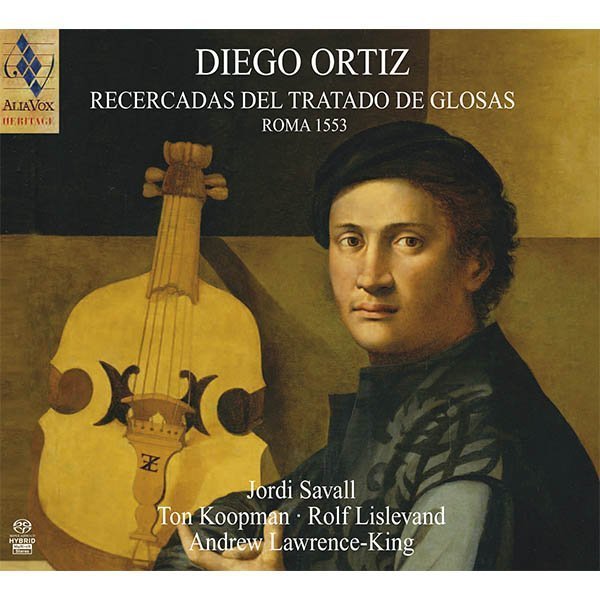DIEGO ORTIZ
Recercadas del Tratado de Glosas
Jordi Savall
Alia Vox Heritage
15,99€
Referència: AVSA9899
- JORDI SAVALL
- Ton Koopman
- Rolf Lislevand
- Andrew Laurence-King
On 10th December, 1553, at one of the highpoints in the Golden Age of Spanish music, there appeared in Rome the TRATTADO DE GLOSAS SOBRE CLAUSULAS Y OTROS GENEROS DE PUNTOS EN LA MUSICA DE VIOLONES NUEVAMENTE PUESTOS EN LUZ by Diego Ortiz, who was also known under the name “el Toledano”. An inevitable reference point for the study of instrumental performance practice in the 16th century, this work is of exceptional interest, both for its purely historical significance and for its artistic value, since it contains the finest examples of the known repertoire for viola da gamba (vihuela de arco or violone) and harpsichord in the Renaissance period.
On 10th December, 1553, at one of the highpoints in the Golden Age of Spanish music, there appeared in Rome the TRATTADO DE GLOSAS SOBRE CLAUSULAS Y OTROS GENEROS DE PUNTOS EN LA MUSICA DE VIOLONES NUEVAMENTE PUESTOS EN LUZ by Diego Ortiz, who was also known under the name “el Toledano”. An inevitable reference point for the study of instrumental performance practice in the 16th century, this work is of exceptional interest, both for its purely historical significance and for its artistic value, since it contains the finest examples of the known repertoire for viola da gamba (vihuela de arco or violone) and harpsichord in the Renaissance period.
We know little today about the life of the Spanish viol player and composer Diego Ortiz. The first signs of his existence occur at the same time as the publication in Rome of the Trattado de Glosas (1553). The extent of knowledge required for the compilation of such a work leads us to think that it was composed when Ortiz was already in his maturity. It was composed – or revised, which seems to be the implication of the indication that the treatise was “nuevamente puestos en luz” (newly published), in the year 1553. By the time that he left his native country, Diego Ortiz had already completed his musical education. This is shown by the clear pioneering nature of his treatise from the strict point of view of musical style. A comparison with Sylvestro Ganassi’s Regola rubertina (Venice, 1542-43), a treatise printed ten years before that of Ortiz and specifically dedicated to a study of viol technique, as well as the underniably Hispanic character of the work by Diego Ortiz, supports the hypothesis that Ortiz had already completed his musical education when he left his native country. However, despite recent research in his native town, we still do not know the exact date of his birth or the place where he received his musical education or even what he did before he undertook his journey to Italy.
+ information in the CD booklet
JORDI SAVALL
Translated by Frank Dobbins







Share